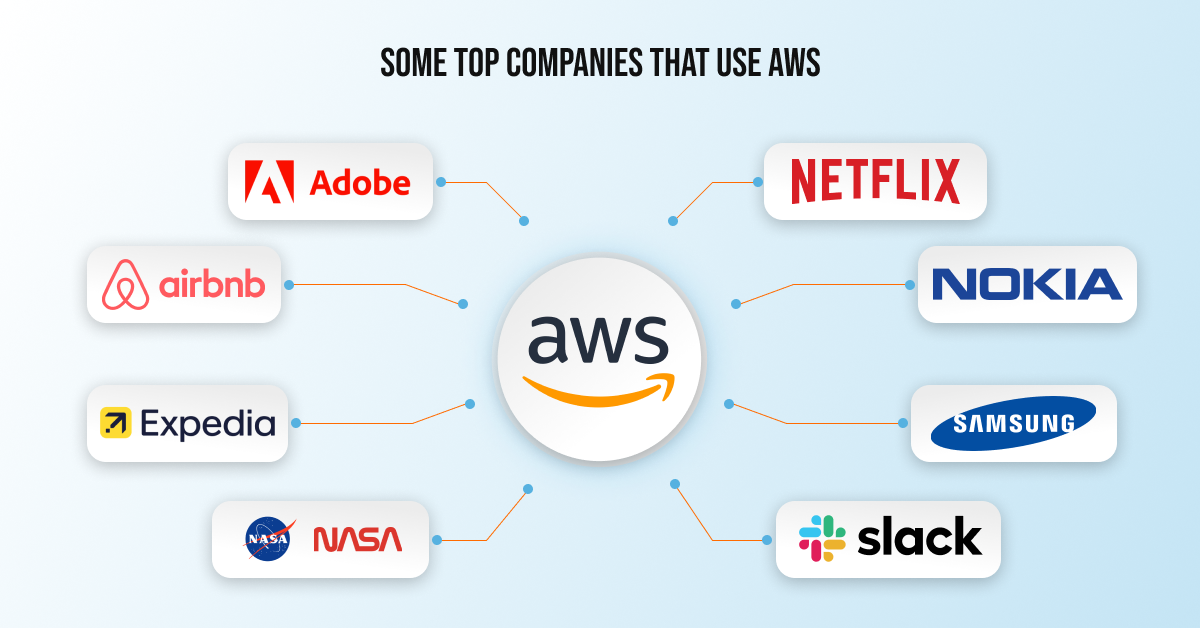
What is AWS (Amazon Web Services) and How Does it Work?
-
By Paramjit Singh
-
18th November 2022
Amazon Web Services, also known as AWS, is a cloud platform that offers content delivery, computing power, database storage, and many more powerful cloud-based services. AWS helps businesses grow using database systems like MySQL, Oracle, and SQL services for data storage.
Amazon rents out database servers and takes care of their security and maintenance so that users can concentrate completely on their business. In addition, Amazon offers migration, development tools, networking, and management of their clients. You might be excited to know more about AWS. So, without chewing long fats, let us get started!
How Does AWS Work Flawlessly?
In the old-school days, if an organization wants to launch its application or website into the digital market, it must buy a server. And servers come at a pocket-burning price. So the organization needs to invest huge money in it. Moreover, server setups are laborious and time-consuming.
Servers need separate infrastructure to maintain them. If any malfunctioning server goes down, you need to hire an expert to bring it back online. And till that time, your online business goes down. Moreover, the organization needs to scale up its server count to manage all requests if there is high website traffic.
It is not with Amazon Web Services (AWS). Organizations do not have to buy physical servers. Instead, they all have to rent them, deploy the website or application, and pay for only what they use. No headache of setup, infrastructure, and maintenance. And the best part, you can rent AWS servers at reasonable prices.
Officially it is called Amazon Web Services. But I will say Amazing Web Services. Look how easy Amazon made it for organizations to maintain their applications and websites at minimal costs.
Some Top Companies That Use AWS

Following are some of the Fortune companies that use Amazon Web Services (AWS):
● Adobe: Multimedia software company.
● Airbnb: Rental service for local stays.
● Expedia: Online travel company.
● NASA: Agency for Aerospace Research.
● Netflix: An online video streaming company.
● Nokia: A mobile company.
● Samsung: A mobile company, apps developed by Samsung are deployed using AWS.
● Slack: A professional messaging platform.
What AWS Offers?
AWS offers 20+ cloud-based services. Here in the section, we have discussed some of the major AWS services:
Analytics- AWS allows you to create visualizations of the data you analyzed. Following are some of the analytics services that AWS offers:
● Athena for running SQL queries on the S3 bucket.
● Elastic search and Cloud Search for creating a managed search engine.
● Glue to create Extract Transform Load (ETL) systems.
● Kinesis for performing Real-time analysis on streaming content.
● Quick Sight for business insights and data visualizations.
Compute – AWS allows you to deploy applications in its cloud computing servers. Compute is also referred to as computing power. Some of the popular computing services of Amazon are:
● EC2 for virtual machines.
● Elastic Beanstalk for automated deployments.
● Lambda to run functions without a server.
● Elastic load balances to maintain to handle the bulk requests.
● Autoscaling to manage real-time requirements.
Databases – Another amazing service Amazon offers is a wide range of database servers. From relational databases to NoSQL database servers. A user can easily migrate from a local machine to AWS with the help of database migration services.
Important Information: There is a difference between database and storage. A database cannot include executable files. At the same time, storage is a service based on the file system that can store executables.
● Relational database service (RDBS) supports databases like MySQL, Oracle database, MS SQL Server, PostgreSQL SQL, and Amazon Aurora.
● Redshift is close relative to PGSQL.
● Elasticache supports in-memory cache services like Memcached and Redis.
● DynamoDB is a highly scalable NoSQL database with very low latency.
Developer tools – It is used to manage software development life cycles. You can use AWS’s developer tools to create, build, and deploy software applications. It includes:
● Code-Star service for creating, managing, and working with software projects.
● Code-Commit is version control software like git.
● Code-Build is for building your code base.
● Code-Deploy for automating the deployment of applications.
● Code-Pipeline lets you keep your eyes on building, testing and deploying the applications.
Migration – Migration on AWS is a piece of cake. You can easily push or get your data on AWS. In addition, you can migrate data from one database to another. AWS uses Server Migration Service (SMS) to migrate on-site servers quickly.
Database Migration Service (DMS) for migrating data from a database to another database. And Snowball to upload data to S3; pack and send the hard disk to AWS.
Mobile – This particular AWS service allows organizations to develop or development of mobile apps. In addition, it allows for to analyze of user data with the help of the following services:
● The mobile hub for adding, configuring, and designing features for mobile apps.
● Users can test the mobile app on hundreds of devices with a device farm.
● Cognito for single sign-on integration with mobile apps.
● Mobile Analytics for mobile data analysis.
Networking and content delivery – The primary network-based services on AWS are virtual private clouds. It allows organizations to initiate their resources in a secure and isolated network. In addition, it lets organizations connect with AWS and Route 53 by using Domain Naming System.
Security, identity, and compliance – With the help of AWS, an admin can manage permission, access restrictions, and security. AWS uses the following security services:
● Identity and Access Management (IAM) allow users to create, manage, and give different access to different users.
● Inspect vulnerabilities on virtual machines.
● Web Application Firewall (WAF) protects from attacks like XSS, SQL Injection, etc.
● Key Management Service (KMS) for managing encrypted keys. In addition, allow the user to create and control keys that can use to encrypt data.
● Guard Duty for detecting threats intelligently to protect AWS accounts.
Storage – AWS offers a file storage system. You can manage (upload, edit, or delete) your data. You only need an active internet connection and a smart device to log into the AWS panel. Basically, the purpose of the storage is to hold the data and information required to run or use by applications.
Some of the popular AWS storage services include:
● Simple storage service (S3) is a file system to store documents, images, files, folders, songs, etc.
● Elastic File System for EC2 instances.
● Glacier for storing the file for a long time at a low cost.
The Wrap
Every year for over a decade, Amazon Web Services has been named an industry leader in cloud computing by Gartner and its Magic Quadrant. AWS outperforms its rivals, Microsoft Azure, Google Cloud Platform, Oracle, and Alibaba. In this competitive market, AWS dominates in market share and product diversity. It is particularly important in the fields of Infrastructure as a Service (IaaS) and database platforms as a service.
In 2006, AWS was relaunched to include three services – Amazon S3, SQS, and EC2 cloud storage – officially making AWS a suite of core online services. In 2009, S3 and EC2 were launched in Europe, and the Elastic Block Store and Amazon CloudFront were brought online and adopted by AWS. In 2013, AWS began offering a certification process for AWS services, and 2018 saw the launch of an autoscale service.
Over time, AWS has added many services that have helped make it a low-cost, highly available, and scalable infrastructure platform. AWS is now focused on the cloud, with data centres placed around the world in locations such as Australia, the United States, India, Europe, Japan, and Brazil. The AWS Cloud spans 90 Availability Zones within 28 geographic regions worldwide, with announced upcoming plans for 21 more Availability Zones and 7 more AWS Regions in Australia, Canada, Israel, India, New Zealand, Spain, and Thailand.

Paramjit Singh
 18th November 2022
18th November 2022




